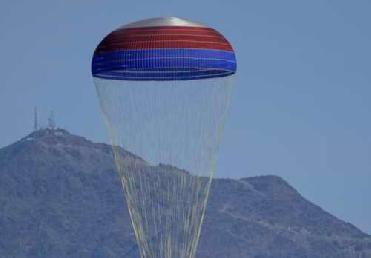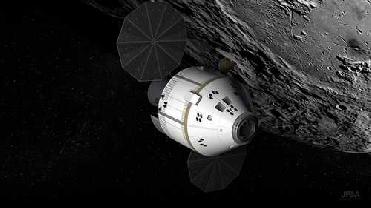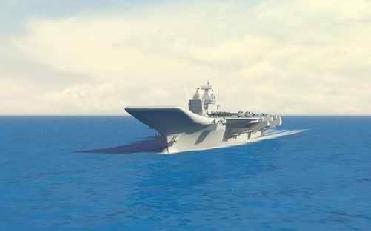
On Saturday at the Army's Yuma Proving Grounds, the Ares drogue parachute successfully extracted the main parachute, which enabled the recovery of the 50,000-pound test drop article. NASA image
WASHINGTON (BNS): The drogue parachute in Ares I rocket successfully completed the second drop test recently at the US Army’s Yuma Proving Ground near Yuma, Arizona.
The first launch vehicle in NASA’s Constellation Programme, Ares I will send explorers to the International Space Station, the moon and beyond in the coming decades. “The drogue parachute is a vital element of the rocket's deceleration system; it is designed to slow the rapid descent of the spent first-stage motor that will be jettisoned by the Ares I during its climb to space. The parachute will permit recovery of the reusable first-stage motor for use on future Ares I flights. The first-stage solid rocket motor will power the Ares I rocket for the first two minutes of launch,” NASA said.
The space agency said that this was the seventh in an ongoing series of flight tests supporting development of the Ares I parachute recovery system, which includes a pilot chute, drogue and three main parachutes. “Researchers dropped the 68-foot-diameter drogue parachute and its 50,000-pound load, which simulates the rocket's spent first-stage motor, from a US Air Force C-17 aircraft flying at an altitude of 25,000 feet. The parachute and all test hardware functioned properly and landed safely,” NASA said.
Its managers said that the parachutes being developed for the Ares I recovery system are similar to those used for the four-segment space shuttle boosters, but they have been redesigned to accommodate new requirements of the Ares I first stage. “The Ares I will have a five-segment solid rocket booster that will move faster and fall from a higher altitude than the shuttle boosters,” they said.
 Previous Article
Previous Article Next Article
Next Article













The Indian Air Force, in its flight trials evaluation report submitted before the Defence Ministry l..
view articleAn insight into the Medium Multi-Role Combat Aircraft competition...
view articleSky enthusiasts can now spot the International Space Station (ISS) commanded by Indian-American astr..
view article